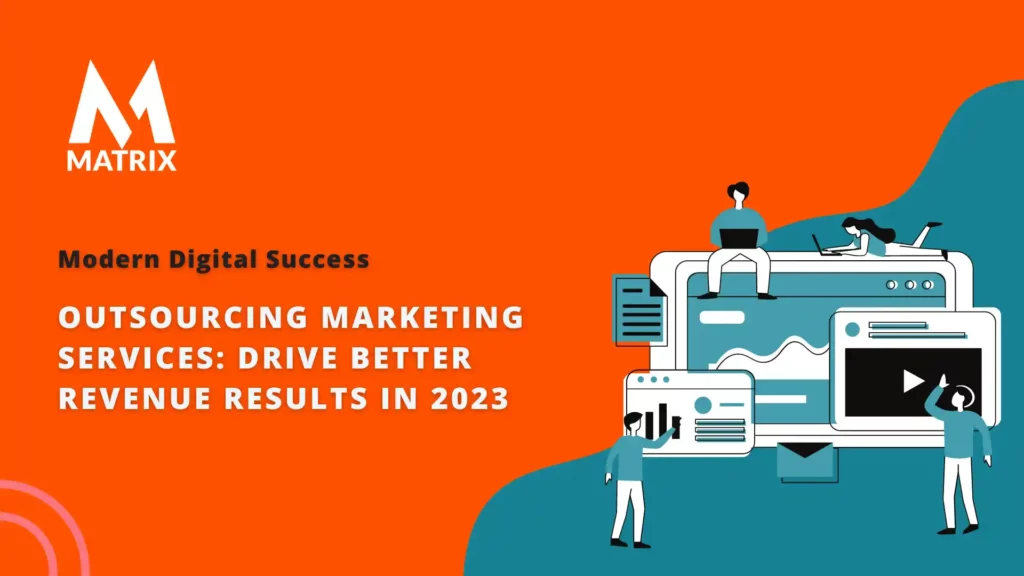Troubleshooting and correcting poor sales response in business turnarounds
What are business turnaround strategies for startups and small businesses?
The first step is admitting that your small business needs a turnaround or failure. You have tried to grow to the next level, the middle market. Or your sales are flat or worse, falling.
Here are some reasons:
- Many small businesses fail within the first 18 months because of various factors.
- Running out of money is a small business’s most significant risk.
- Inexperience managing a business or an unwillingness to delegate can negatively impact small businesses.
- Poorly-planned or executed marketing campaigns, or a lack of adequate marketing and publicity, are among the other issues that can cripple small business profits.
Something in a turnaround you can control while others will be out of your control. Some of my friends, clients, and peers struggle with the COVID-19 virus. This brings both opportunities and will impact middle-market businesses that we find are not financially sound or starting to hum.
Some say that failure is the best teacher than success. As a marketing manager, you will inevitably experience failure in your marketing program. Is your email or ad campaign generating a low number of leads, or could they be better?
A marketing program that targets the wrong prospects or which sales message is not well received by the market. Failure can reveal the insights that lead to a successful result in your next marketing program for marketing managers.
Not failing often means not doing.
This article covers uncovering and assessing the cause of poor marketing test response in startups a new product launches. Many of these techniques also apply to the problems faced by all marketing managers who must deal with the results of poor sales response in marketing programs in any company.
Turnaround meaning in business?
Business turnaround is a turnaround situation where a business or organization improves its financial performance after a period of decline. This can be done through various methods such as cost-cutting, increasing revenue, or improving operational efficiency. A turnaround is often achieved by changing the company’s business model or strategy.
A turnaround, also known as a turnaround or corporate turnaround, is when a business or organization improves its financial performance after a period of decline. This can be done through various methods such as cost-cutting, increasing revenue, or improving operational efficiency.
Staring an organizational turnaround in the middle market
While turnarounds are often successful, they can also be risky. If a company fails to make the necessary changes, it may not be able to recover from its decline. For this reason, it is important to carefully assess the situation and plan a strategy that has a high chance of success.
The HubSpot inbound agencies do not have the human capital with 30 years of experience. Don’t let them fool you. We use inbound agencies all the time. We hand off production-ready omnichannel programs.
The middle market gets complex, too complex for the inbound marketing agency. They are tactical machines, but global multinational companies are not an inbound marketing agency sweet spot. Thus the rise of Matrix!
If a company is experiencing a decline, it is important to take action quickly to reverse the trend. To start an organizational turnaround, several steps can be taken: assess the situation. It is important to understand the root cause of the decline and identify any areas that need improvement. Review your strategy, people capital, technology, and its usage.
Developing and testing marketing programs for your midmaret turnaround

Often, the marketing programs you execute for your test marketing campaigns or marketing project for a new product launch fall short of your expectations.
Your email workflows, ad placements, sales support follow-up, and other marketing activities generate inquiries and sales but are not up to the level of the market response expectations you would set out in your marketing plan.
You must move to assess your marketing programs and take action to save them. Testing marketing programs requires the marketing manager to have the ability to capture the data and analyze the issues that are causing poor performance.
It becomes a bit of a math problem. Then you’ve got to figure out why your target audience is not responding, which may require different wording and content.
Now I’m not talking about the buttons on your call-to-action. Whether red, blue, yellow, or black, it doesn’t matter. I know my marketing agency friends are all saying he’s crazy.
There are many other things that I would test before I test button colors.
Another common outcome is that some marketing activities, such as online advertising placements, generate far less response than others, such as email workflows or maybe a trade show appearance.
However, overall results fall about halfway between your projections and zero. This shows a logical need to change your marketing program, its product, sales and distribution channel, or all of the above.
When a new market test results in a startup showing neither apparent success nor outright failure, falling somewhere down in the gray middle zone of sales performance, there will be many immediate reactions to the news.
Your CEO may have a different take than the CFO within your organization. Most of them are distracting and unconstructive, however. Some team members will panic, and others, especially founders in the startup or senior executives in the company like board members, will deny the fact clear facts before them. Don’t let this happen.
These are surprising responses to adversity since ambiguous sales response is the usual outcome of most market tests. That’s why you perform market testing. As already stated, the reason for the market test is done first is to cover both the bad and the good aspects of the product’s marketing appeal and to change the small business marketing program.
Over the past 20 years of running a marketing agency, we get calls asking, ‘can you predict the outcome of a marketing program?” The answer is yes. We can. But it will require testing your marketing programs before we scale them. Digital marketing is just common logic.
When you consider that most startups are introducing their new products or services. Products or services may require potential customers to change their business ways in strange and untried markets.
Surprisingly, so many small business or startup team members react to panic and denial to news of a disappointing response to the company’s first market test. They should have expected it and been better prepared to face it. Set expectations with all the stakeholders involved in your marketing campaigns.
Here’s an argument you can use. Before you begin any marketing program and think you will scale it before testing it, let me know how that worked out here @gschildge.
Here are some ways to get your marketing programs turned around for your small business marketing campaigns

Your first reaction as a marketing manager in a startup or an established company basing subpar results for any marketing program is to avoid being swept up in a panic that follows terrible news. Or to be influenced by the emotional responses of others around you.
Check the date on this post and tell me if you are experiencing this with a worldwide health emergency. These are trying times for everybody in the world at all levels. Panic and not the solution. Be proactive, not reactive.
“Don’t say there’s nothing you can do.
There’s always one more thing that you can do.
There’s always something you can do.
Now let’s explore how I identify some of the common marketing issues uncovered by market tests in startups or any underperforming marketing program and what you can do to correct them.
Start with a gap analysis and find out what went right in your small business marketing programs.
Before examining the causes of a poor initial market test or any other marketing project, look for those areas where your marketing activities did well. This will the beginning of your midmaret turnaround.
Review all your metrics and KPIs. Are they realistic? Are your plans working? If not, hire a high-end consulting firm like Matrix Marketing Group to figure it all out. It will be well worth the money.
These positive indicators become the key to showing you what you need to do. It may be what you need to change in your marketing program and improve your results.
For example, a slight modification to your marketing approach, the types of prospects you’re targeting, or your marketing methods will cause better marketing performance.
Review these areas in your market test results:
Sales generated by the test. Who bought it, and why? Look at the sales of your marketing test and see how many sales you made, how many leads you received, the benefits of the digital campaign how many people bounced or opted out.
Whether you’re launching a new startup business or launching a new product, it is imperative to not only segment your list but’s your basic hygiene. But be sure you understand what your customer’s pains are and how they will benefit or eliminate those pains by using your product or service.
Why did these individuals buy? Is there anything about them, such as our job title or responsibility or specific pains, that makes them different from most prospects you targeted in your test?
Now it’s time to pick up the phone and call some of these new customers and try to find out the common threads that led them to buy your company’s product or service. What factors motivated than to buy? Was, is the cost savings?
Maybe the fear of becoming technologically obsolete or are being left behind, like a lagger, and their business industry. Dissatisfaction with a similar product sold by a competitor? Can these motivations be turned into better sales copy for marketing deliverables used in a follow-up marketing campaign?
What benefits or pain relievers did these buyers find compelling about your company’s marketing deliverables (emails, ebooks, sales presentations, or advertising)?

What did they find that was lacking or that confused them in your marketing deliverables? Perhaps the marketing deliverables (ad copy or email workflows) used in your test succeeded with these few buyers despite significant sales benefits and content problems.
We see this a lot when people are trying to do Facebook ads. I don’t know how many times I’ve heard we’ve done this. We’ve done that before, and it didn’t work. Then I asked, what test did you run?
While some answered, ‘how do you do a test?’ While others just have not performed the value proposition exercise required to understand pain points and pain relievers.
What kinds of companies bought your product?
If you are selling a business product, carefully evaluate the companies who bought from your company during the test. Do they seem to be more or less technically intuitive than other companies in their industry?
If your company is selling Hi-Tech products like a SaaS product, or services, even a few sales to a handful of smaller companies known to be early adopters of the new technology in their industry can be a bright spot in a weak overall market test results. As more sales effort is applied and your product proves itself in the field, other companies will follow.
Are the companies smaller in your industry that purchased your product?
If so, it’s a fact that smaller companies make purchase decisions faster, and perhaps it’s only a matter of time with additional effort on your part before larger companies buy.
Examine the market segments and your target companies that occupy your industry.

Inspect the markets these companies serve and the specific applications they provide to their niche markets. Did these companies buy your product to address some particular use or help their special market segment not served by all the other companies in that industry?
This may be an opportunity for you to promote certain aspects of your product to those market niches, or sweet spots, in multi-channel marketing activities. We work with some small businesses either in a multi-channel marketing strategy or in an omnichannel marketing environment.
Your email list needs to be segmented and targeted to the appropriate person and company.

If you tested various email lists for a direct email test or project, examine the results generated by each email list you tested. This is simple if you are using marketing automation. Did specific email lists do better than others?
If so, are these email lists large enough to make a direct email campaign a viable part of your marketing program, despite the poor performance of other email lists?
I recommend that companies do not buy an email marketing list. If you have done your homework, you can build an email list that targets a specific audience that may want your product. But by doing this, you still risk higher bounce rates and increased spam alerts. So my recommendation here is to tread lightly.
If you tested a few email lists of subscribers (your house list) to a few of your industry’s major trade publications’ email lists, did one of these tests do any better than the others? Did it do better by a considerable amount?
See if your program is improved by 30% or better. That is a good target. If it did, perhaps you can improve your email results on that publication mailing list by improving the sales impact of your email peace or offer to test it again.
Even a slight bump in results on your email list to an industry’s primary publication email list is a good sign, send subscribers to a major industry publication is often the most representative cross-section of your market. We ordered it and did not do an email blast or spam your email list.
Examine marketing programs that go wrong, common causes of poor marketing response
The market test revealed four major causes of subpar market response.
- Product-related problems (product alignment)
- Marketing-related problems (confusing brand)
- Market size and distribution problems
- Uncontrollable factors (like COVID-19, war, etc.)
The first three causes can often be corrected by you and your marketing team.
Other factors, such as lack of sufficient financing to adequately fund your startup’s marketing activities, or bad timing, the Coronavirus, also determine the success or failure of a new venture. But even these factors can sometimes be reversed by better marketing methods.
Poor marketing results are problems that are directly related to the marketing content, methods, deliverables, or execution of the test or marketing activity. Let’s drill into the most common causes of poor marketing results and what you can do.
Copy and deliverable problems and your turnaround
Inadequate marketing and sales copy and poorly developed marketing deliverables are the leading cause of poor response in any marketing effort. This is the first place to look. A test that generates poor or mixed results should be analyzed and modified to perform better in the aftermath.
With the benefit of hindsight and the experience of receiving feedback from prospects and your Market who receive your test marketing materials, you can often identify areas and sales copy and presentation that can be improved. This is where A/B testing comes into play.
The main benefit is missing or is not recognized by the prospect
Of all sales copy-related problems, the value proposition (the main benefit) is missing or not recognized by readers as powerful enough to persuade them to buy your product. Is a leading problem, and email marketing, online ads, sales presentations, websites, ebooks, blog posts, etc.
The most common example of this problem is when ad agencies lead an email marketing campaign or a print ad with a clever headline or silly visual pun instead of a clear, no-nonsense presentation of your product’s most compelling benefit to the prospect.
Relying on your prospects to even understand, much less be motivated by a clever headline or visual, especially in a market test, is a foolish move that always leads to poor sales response.
The main benefit not understood by the prospect can help your midmarket turnaround
However, most prospects and manufacturing companies won’t see the inherited advantage found in a headline leading revolutionary AI robotic systems for manufacturers. How many times have you read press releases where it talks about where the leading company.
Let’s change the benefit around a little bit and see the benefits, like lower scrap rates, reduced material cost, and higher assembly line output—artificial intelligence (AI) robotic system for manufacturing. These benefits would be a strong main benefit, generating more prospects leads.
Be sure you map out your customer journey and align your sales copy with your buyers in each stage of that buyer’s journey.
Go through the exercise of understanding your archetypes, personas, titles, Industries, language, pain points, and pain relievers to get a better market response. Shortcut this step, and you’re headed for trouble.
Sales copy and benefits are poorly organized or not well presented.
When the primary sales copy benefit is missing or is not well executed, the other, less essential sales copy benefits are also not present did well.
Convincing sales copy should have the same effect as a personal sales presentation, leading the reader through each of the product’s key benefits and building a presentation that logically and persuasively moves the reader to the final action step required by the marketing deliverable. These actions require your marketing programs to design specific business outcomes.
Poorly written marketing deliverables are either not written, don’t present their sales benefits or value proposition logically, or don’t contain enough sales copy benefits to persuade the reader in the first place.
Prospects are not told what to do next or are not motivated enough to take action.
The main headline in the sales copy of your marketing deliverables may be compelling enough to interest your prospects, but your call to action, or the contact information you need to provide to get your prospects to call you, to fill out a web form, or link to your company’s website, maybe buried in your ad, marketing material, or response coupon– or may not be there at all.
If your midmarket turnaround has stalled, you can improve your call to action in your marketing campaigns and website.
You may have included the necessary sales contact information but no additional incentive for the prospect to call. For example, a free consultation, a discount if the prospect orders within 30 days, or an offer for a free sales premium that is highly useful and relevant to the product or service being offered. You might use an explainer video, white paper, ebook, checklist, or other items of perceived value to your target audience.
Some prospects may call your company, but some will put your brochure, ad, or coupons aside. They may be making a mental note to call you. But soon, the busy tempo of their work lives resumes, and, absent any special incentive your marketing deliverables offer to nudge them into action, your prospect’s attention shifts somewhere else.
Some of our enterprise sector clients will have a direct salesforce supported by sales development reps. A SaaS company typically will develop the sales process where it is either self-served or may be supported by a first-line customer support person.
Additionally, this is where marketing automation comes into play. It doesn’t matter if you’re a one-person show or a team of 25 people in your marketing and sales organization. You can nurture these leads automatically without upsetting them by setting up email workflows and conditional logic.
Identifying and solving sales copy and marketing deliverable problems.
You can eliminate sales copy benefits and presentation problems now and in the future. Just by training yourself to look at your small business marketing deliverables as your prospects do. Your business turnaround consultants will be able to jump start with a better sales response.
You have to look at it through the lens of your target customers. I’ve seen way too many companies that have created phenomenal products. They were engineering people and failed to get it into the market due to sales copy and go-to-market plans. They can get into trouble quickly without proper funding and may require a business turnaround strategy.
Start by emptying your mind of all you know about your company’s products or services and reread each marketing deliverable in its final layout version. Again if you haven’t researched your market and developed a clear value proposition for each of your stated claims, start there. Because at this point, you’re just wasting your time and money.
Open your email workflows just like your prospect would, and evaluate the headline of the sales in the subject line. Review your copy and your call-to-action as your customer would do. Is the leading sales benefit of my product or service getting through to me?
Do I understand what this product is, what it does, and what it can do for me? Are the other benefits easy to read and understand? Does your company look credible? What do you do next, and how can I order?
Do the same exercise with your company’s advertising. Please print out the final layout of your ad and pass it to your peers, friends, and other people in the organization. Get their feedback. Trust me, as a marketing person, and it will help lend credibility to your efforts.
Does your online ad layout stand out from the blur of the other ads? Read the headline, then read your body copy. After a few seconds, you get the idea of what product is being sold? If not, your ad copy needs to be rewritten, or your layout needs to be redone and amped up. Headlines are set bigger, or in bold type, visuals and large, with more spacing between bolder headlines in the body content.
Repeat the process for every marketing deliverable you produce in your company. Sales material, marketing material, flyers, catalog sheets, and your company’s website are all important to review.
With these new eyes, you will see how the main headline could be written more persuasively—the missing bold subheads in your sales copy where the benefits should be. The call to action that should be at the bottom of your ad but isn’t, or is it. But needs to be bigger and Bolder so it won’t be missed by someone who sees it for the first time.
Even the best, most well-written direct sales copy, online ads, or websites can be made even better. It would help if you looked at your development of marketing delivery as a process of constant examination, adaption, and improvement. Cultivating the ability to look at your marketing deliverables with new eyes helps you see how to make a good sales message even better.
Developing this skill and listening to the feedback you receive from prospects, customers, internal employees, and sales reps from your initial market test or other marketing activities generates a better response for your next marketing project. It also helps you eliminate sales copy a presentation and weaknesses as a cause of low response on future marketing campaigns.
Wrap-Up on Business Turnaround

Before you start a turnaround, planning is always important. You need to have a business turnaround process and focus on executing it well.
Matrix creates hight tuned programs and a business turnaround roadmap to drive digital transformation and revenue improvement across the enterprise.
There are some similarities between corporate turnarounds and small businesses and huge differences. It might take an honest marketing assessment to identify what programs are tuning and what needs to be eliminated.
Sometimes a business strategy requires an outside view from a middle-market turnaround consultant.
Setting the right strategy is imperative for achieving a successful outcome and realizing goals expeditiously and efficiently. To help you get it right, collect, analyze, and adapt your marketing messages and sales copy.
You will see better results and a reduction in marketing costs.
We’re listening.
Have something to say about your thoughts on the middle market business turnaround program?
Please share it with us on Facebook, Twitter, or LinkedIn.
Are you not getting the results you had hoped for with your current marketing agency? Let the experts at this digital marketing agency in Denver, Colorado, help you generate more web traffic, convert more leads, and close more sales. Our team knows what it takes to build and maintain a proven marketing strategy that drives high-quality leads. For more information, check out our marketing services or contact us to schedule a free consultation to discuss your needs and our services.
General FAQs about Business Turnaround
What is a business turnaround?
A turnaround is the financial recovery of a poorly performing company, economy, or individual. To create a turnaround, an organization must acknowledge problems, consider changes, and develop and implement a problem-solving strategy.
Why is a business turnaround important?
Turnarounds are important because they mark an upward shift or improvement for an organization after it experiences a significant period of negativity. The turnaround is akin to a restructuring process where the company converts the period of loss into one of profitability and success while stabilizing its future.
How can I start a business turnaround?
What is a business marketing assessment?
Business marketing assessment is a detailed and objective evaluation of the marketing strategies, talent, and technology. It is a comprehensive analysis of environmental forces (like Covid-19), market trends, entry barriers, competition, risks, opportunities, and the company’s resources and constraints.




